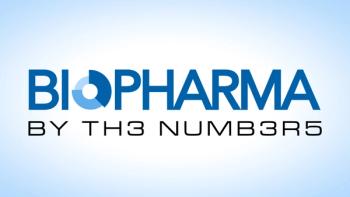
FDA Grants Quanterix Plasma Test Breakthrough Device Designation
FDA granted Quanterix’s neurofilament light chain plasma test a breakthrough device designation as a prognostic aid for relapsing-remitting multiple sclerosis.
Quanterix, a company specializing in biomarker analysis, announced that FDA has granted its Simoa neurofilament light chain (NfL) plasma test a breakthrough device designation. According to an April 22 press release from the company, the designation covers the devices use as a prognostic aid in assessing the risk of disease risk in patients diagnosed with relapsing-remitting multiple sclerosis (RRMS).
According to the release, the device is a digital immunoassay that quantitatively measures NfL in human serum and plasma. If used in conjunction with clinical, image, and laboratory findings, it could serve as an aid in identifying RRMS patients' risk of relapse within four years, allowing physicians to tailor an individualized therapeutic approach.
“For the more than two million people suffering from MS worldwide, there’s an important need for more informed and effective treatment options,” said Kevin Hrusovsky, chairman and CEO, Quanterix, and founder, Power Precision Health, in the press release. “Obtaining FDA breakthrough device designation for our plasma NfL MS test was a key objective for 2022. We are pleased to have the opportunity to work with [FDA] to help advance the Quanterix Simoa NfL test towards regulatory approval.”
Prior to this designation, a study from The Lancet Neurology used this plasma test to help establish a new method for identifying and interpreting values of serum NfL (sNfL) in individual MS patients. Additionally, it was referenced in at least 20 studies presented at the American Academy of Neurology’s 74th Annual Meeting.
“There has been an ever-growing body of research with the Simoa NfL blood test supporting NfL as a reliable biomarker for MS disease activity prognosis and treatment response monitoring,” said Mark S. Freedman, professor of neurology and director of multiple sclerosis research at the Ottawa Hospital, in the release. “[FDA’s] grant of [b]reakthrough [d]evice designation for this test has the potential to help the multiple sclerosis community further advance the optimal use of NfL measurements in both research and clinical practice aimed at more effective therapeutic management of the disease for the millions of patients suffering from the condition.”
This is the second test from Quanterix that FDA granted breakthrough device status—the company’s phospho-Tau 181 assay for Alzheimer’s disease also received the designation in 2021.
Source:
Newsletter
Stay at the forefront of biopharmaceutical innovation—subscribe to BioPharm International for expert insights on drug development, manufacturing, compliance, and more.





